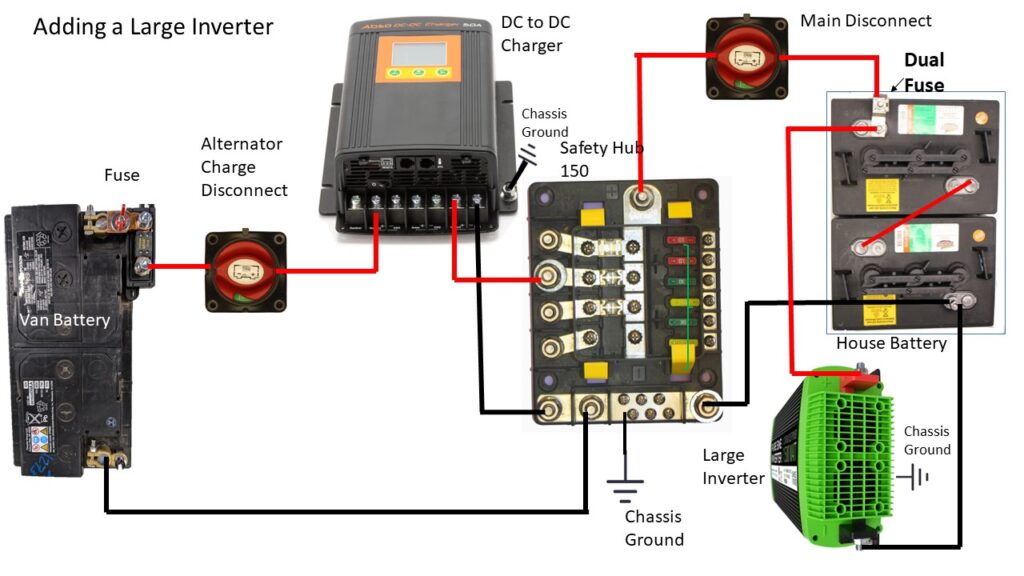Adding a large inverter
Inverters up to about 1800 watts can be hooked directly up to one of the four Bluesea Safety Hub higher amperage terminals. As we have done here…
But the Hub cannot handle larger inverters than this due to the high amperage. An easy way to hook up a larger inverter (say a 2 or 3 thousand watt one) is to hook the inverter directly to the house battery. One of these dual terminal fuses can be used with one fuse for the Safety Hub and the other for large inverter.

Wiring diagram for a large inverter.
This diagram shows how a large inverter can be hooked directly to the house battery. You might also want to add a disconnect switch in the line from the house battery to the inverter – particularly if the inverter does not have it’s own on/off switch. This switch could the the same type as is used for the Main Disconnect switch.

One thing to bear in mind for larger inverters is that more battery will be required to run them. A 3000 watt inverter is going to pull about 300 amps when running at full power. The maximum recommended discharge current for the 100 amp-hr SOK batteries that we show in the base system is 100 amps – four of these batteries is the least I would try to run a 3000 watt inverter on. Likewise, two golf cart batteries will not run more than about 1500 watts of inverter.
Give some thought to whether you really need something like a 3000 watt inverter – things get harder and more expensive throughout the system when you do this.
Gary 7/27/22

Now your Main Disconnect doesn’t disconnect the inverter circuit. 🙁
Alternatively, use a single battery fuse (MRBF) which is sized for your primary cable gauge
and connect the inverter (with the same gauge) to the Main Disconnect terminal, too.
This way the MRBF will protect the cable through the Main Disconnect to the SafetyHub
and to the Inverter. One (minor) downside is that an inverter short will blow the main fuse
and not one specific to the Inverter.
Hi Neal,
Thanks for the note.
I think that might be workable, but with a large inverter needing 300+ amps and the hub up to 200 amps, this makes for pretty large wires, lugs, fuses and disconnect, which get more expensive and harder to find and install.
If a person is not OK with just using the switch on the inverter plus the main disconnect to turn everything off, then maybe, as mentioned, adding a separate disconnect for the inverter would be workable without getting into such large currents. I always turn my inverter off when its not in use to eliminate its standby current, which turns out to be 99.99% 🙂 Honestly, I think if I were doing it again I’d just skip the inverter altogether – but, that’s just me.
Gary